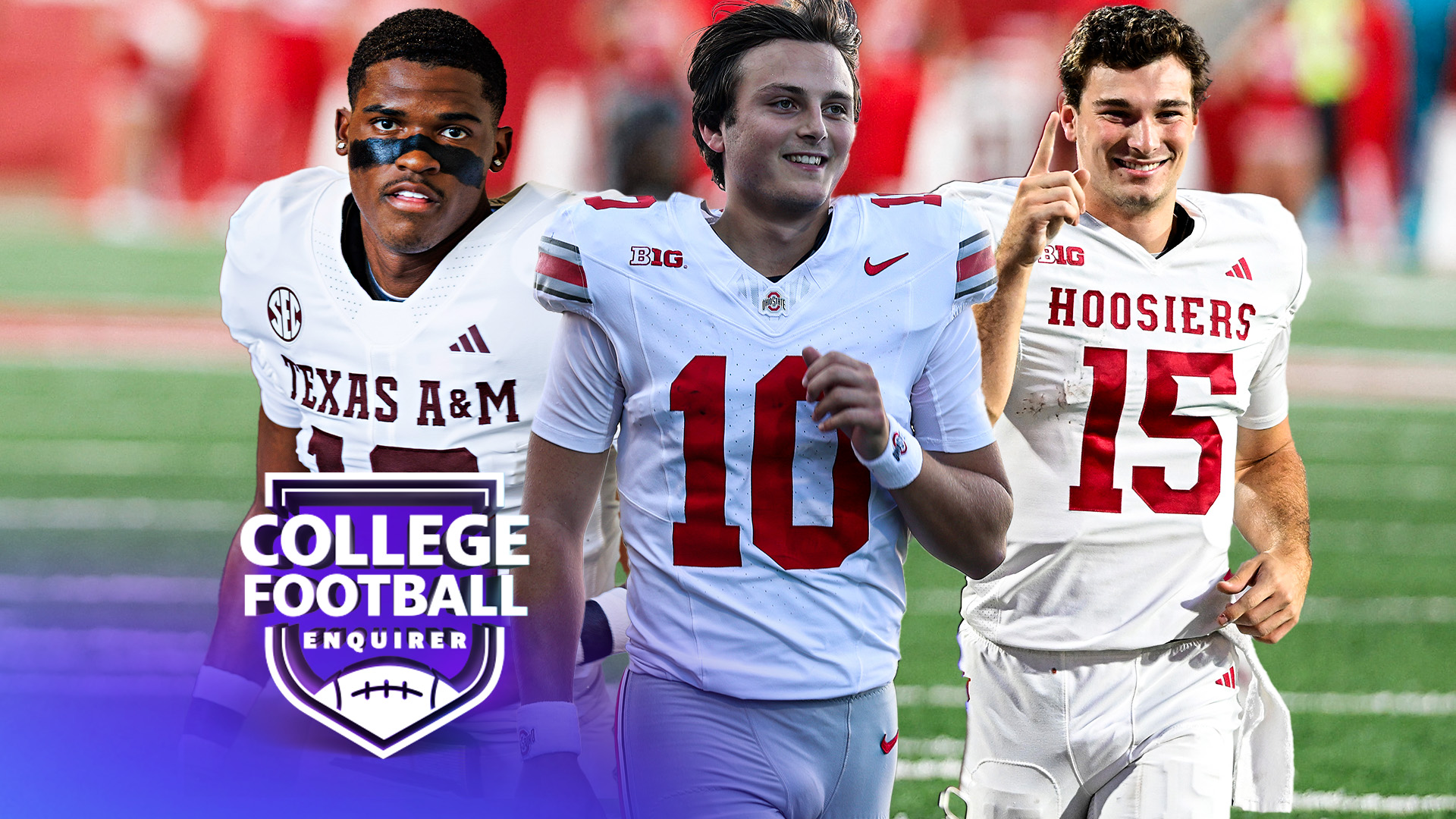Ohio State’s Dominance in College Football Playoff Rankings Mirrors Political Polarization, Fueling Rivalries and Controversy Across the Nation
The annual unveiling of the College Football Playoff (CFP) rankings has become a significant ritual in the American sports calendar, sparking debates that often mirror societal divisions. The 2025 rankings have brought Ohio State to the forefront, maintaining its position as the top team, followed by Indiana, Texas A&M, and Alabama. This lineup not only generates excitement among fans but also ignites discussions about the implications of such dominance in college football. As Ohio State stands atop the rankings, questions arise regarding the nature of their success and its broader impact on the sport.
Ohio State’s ascendancy is reminiscent of political leaders who rise to power amidst a backdrop of controversy and division. Their dominant performance this season has led some to argue that their schedule lacks the rigor necessary to truly test their mettle. Critics suggest that such an unchallenging path could ultimately hinder their performance in the playoffs, where they will face teams that have battled through tougher competitions. This narrative resonates not just in sports but in the larger context of societal debates about the meritocracy and fairness in competitive environments.
The rankings also reflect the state of rivalry in college football, notably between Ohio State and Michigan. As the Buckeyes prepare to face their archrivals, they carry the weight of a four-game losing streak against the Wolverines, heightening the stakes of their upcoming matchup. This rivalry embodies the fierce passions that college football ignites, akin to the fervor seen in political campaigns. Fans are polarized, with their emotions running high, further entrenching allegiances that mirror ideological divides in society.
In contrast to Ohio State’s success, the struggles of programs like Clemson illustrate the volatility of college football dynamics. Once a powerhouse under Dabo Swinney, the Tigers have faced significant challenges this season, prompting discussions about Swinney’s future and the sustainability of his coaching methods. This situation invites comparisons to historical figures in sports and politics who have faced scrutiny after periods of success, questioning whether their strategies can adapt to an evolving landscape. The implications of such a decline resonate with those who analyze leadership and accountability in any competitive field.
The CFP rankings also highlight the emerging dominance of the Big 12 conference, which appears poised to secure two playoff spots, while the ACC seems likely to send only one team to the postseason. This shift raises questions about the competitive balance in college football, reminiscent of discussions about equity in political representation. The ability of conferences to position themselves in the playoff picture reflects broader issues of power dynamics within the NCAA framework, creating an environment where rivalries and competitiveness are heightened.
The case of Miami, ranked at 18 despite a victory over Notre Dame, underscores the complexities of the ranking system. Fans and analysts alike are left to ponder how such discrepancies occur, and what they signify about the evaluations made by the playoff committee. This scenario mirrors the contentious nature of political polling, where results can be interpreted in various ways depending on the narrative one wishes to promote.
Furthermore, the narrative surrounding Julian Sayin from Ohio State, who is positioning himself for the Heisman Trophy, adds another layer to the ongoing storylines in college football. His potential accolades contribute to the debate over individual recognition versus team success. In a society increasingly focused on individual achievement, Sayin’s campaign can be seen as a reflection of broader cultural themes that prioritize personal accolades over collective efforts, further fueling the competitive spirit that defines college athletics.
As the season progresses and tensions mount, the upcoming games will not only determine playoff spots but also deepen the rivalries and narratives that have become central to college football. The stakes are high, and the implications of these rankings and performances extend beyond the gridiron, touching on themes of power, competition, and societal values that resonate throughout American culture. The future of teams like Ohio State and Clemson will continue to unfold, creating a landscape as unpredictable as the political and social arenas that often mirror their fervent rivalries and passionate fan bases.
Subscribe to the College Football Enquirer
Apple Podcasts | Spotify | YouTube
It is that time of year again! The time when attention shifts away from the AP Poll and moves over to the College Football Playoff rankings. Tuesday, the College Football Playoff committee released the initial rankings for 2025. Ohio State remained at the top followed by Indiana, Texas A&M and Alabama to round out the top four. One of the most notable rankings was that of two teams who played earlier in the year. Miami, who has been struggling as of recently, came in at 18. That fell well behind a team they beat in Notre Dame who is sitting at 10. Also, the Big 12 appears to be in position to get two teams into the playoff, while the ACC looks like it will be a one-team league. Andy Staples, Steven Godfrey and Ross Dellenger discuss all of the drama and voice their thoughts on all of the attention surrounding this first rendition of the rankings. Plus, the guys take a look at what the bracket would look like if the playoff started today!
Later, the guys discuss the top team in the country. The Ohio State Buckeyes. Such a dominant season has not created much drama to talk about for this team, however Andy, Ross and Godfrey look at just how dominant they have been. Is this success due to a lackluster schedule, or is this team on a path to another national title? On the flip side, could the lack of competition hinder Ohio State in the long run as they go on to face far more difficult competition in the College Football Playoff? And, what about their hated rivals, the Michigan Wolverines? Is this the year Ohio State can snap the four-game losing streak, or will Michigan prevail once again?
Then, the guys take a look at a team who had similar expectations as Ohio State in the preseason, but their season has gone far differently. The Clemson Tigers. Dabo Swinney’s team has struggled tremendously this season and it appears that Swinney’s method of coaching may not be holding up in the new era of college football. Is this the beginning of the end for Swinney at Clemson? Should Dabo move on from coaching or just move on from Clemson? Are there similarities between his situation and Nick Saban’s before Saban retired?
All of this and more on today’s College Football Enquirer.

Photo by Steph Chambers/Getty Images
Photo by G Fiume/Getty Images
Photo by Wesley Hitt/Getty Images
Photo by John Fisher/Getty Images
(0:49) – Reactions to the initial CFP rankings for 2025
(24:59) – Is Ohio State too dominant?
(32:18) – Will Ohio State beat Michigan this season?
(42:47) – Julian Sayin’s Heisman campaign
(48:47) – Is Dabo Swinney ready to move on from Clemson?
🖥️ Watch this full episode on YouTube
Check out all the episodes of the College Football Enquirer and the rest of the Yahoo Sports podcast family at https://apple.co/3zEuTQj or at yahoosports.tv

